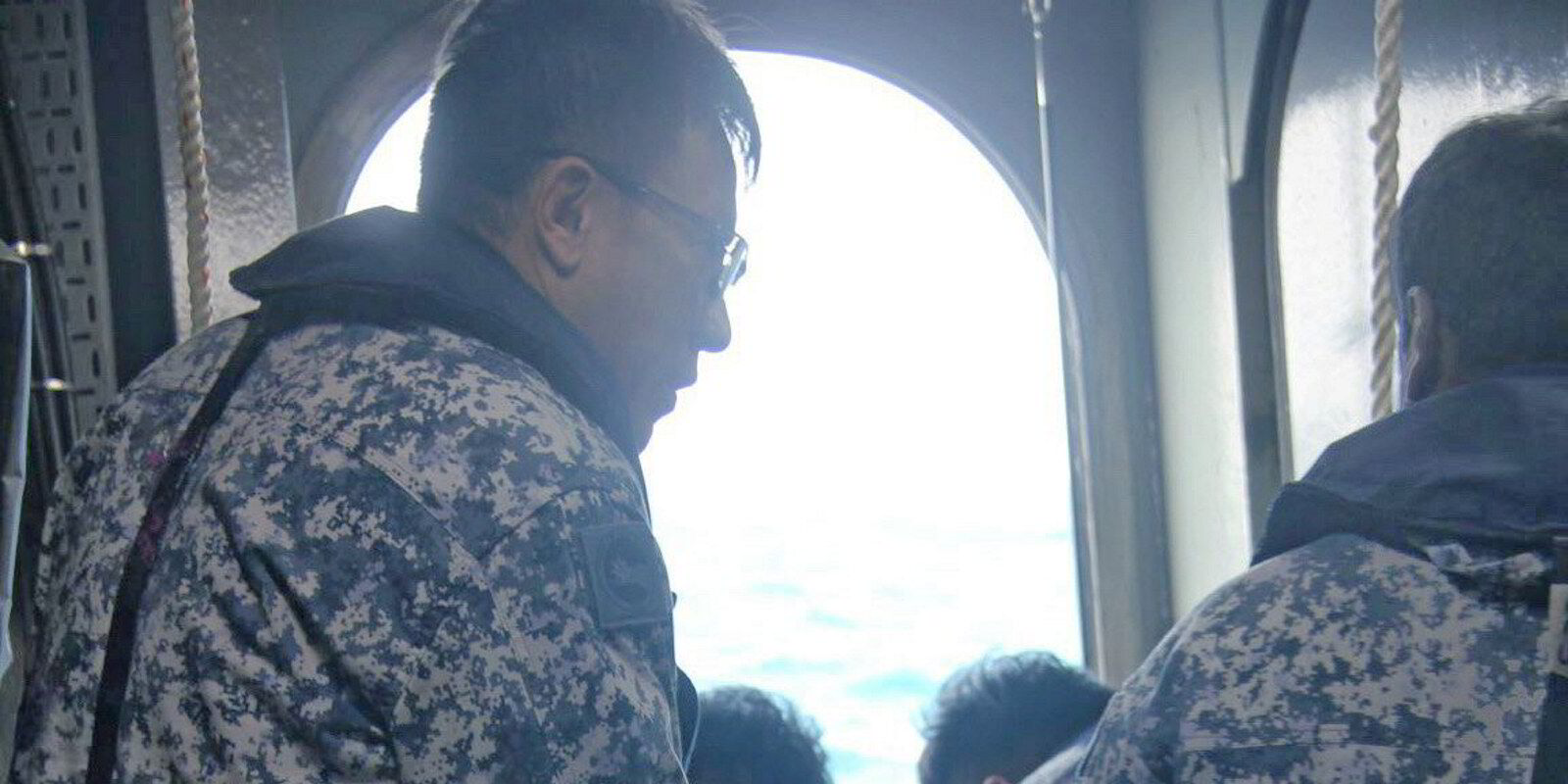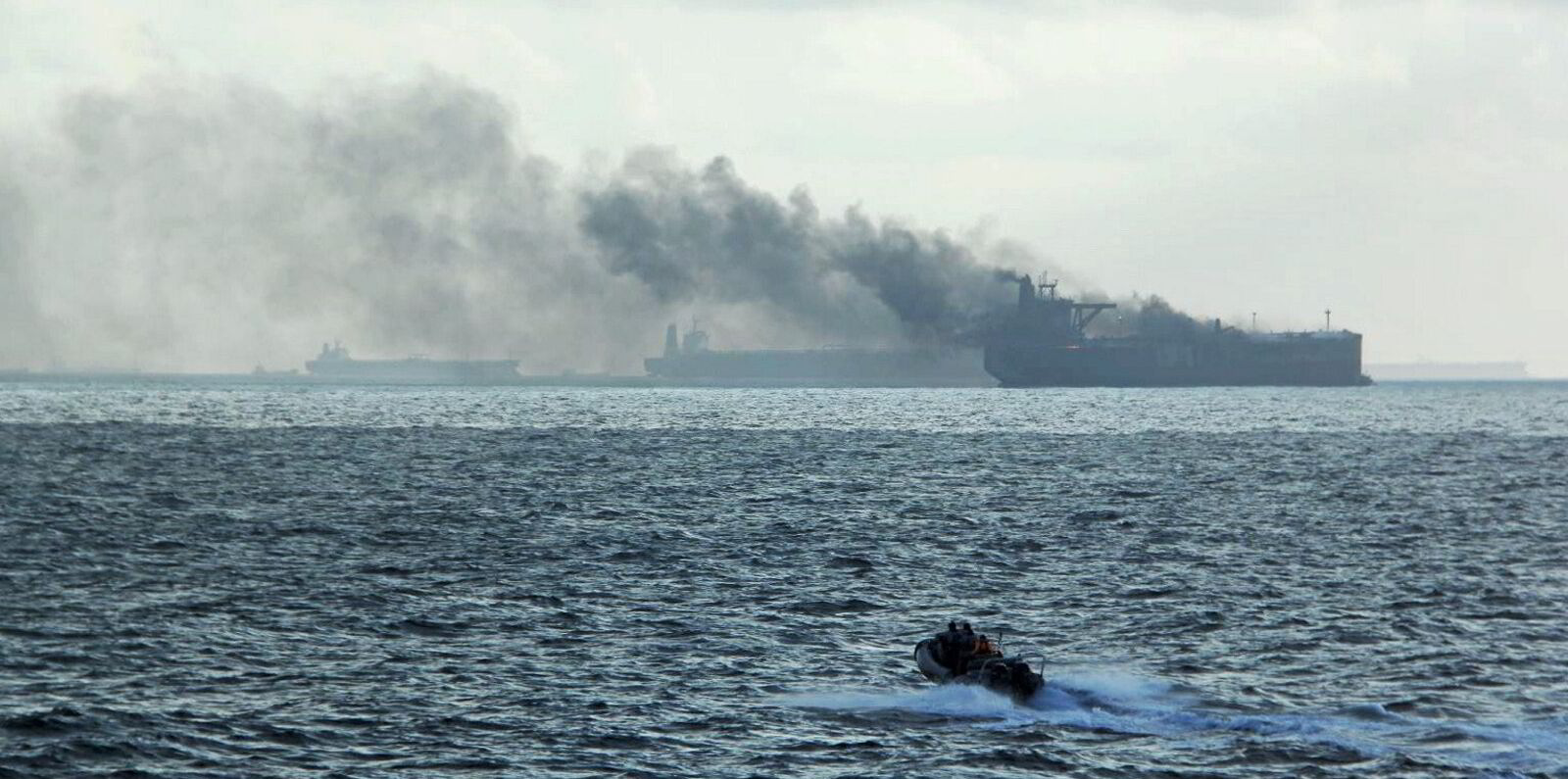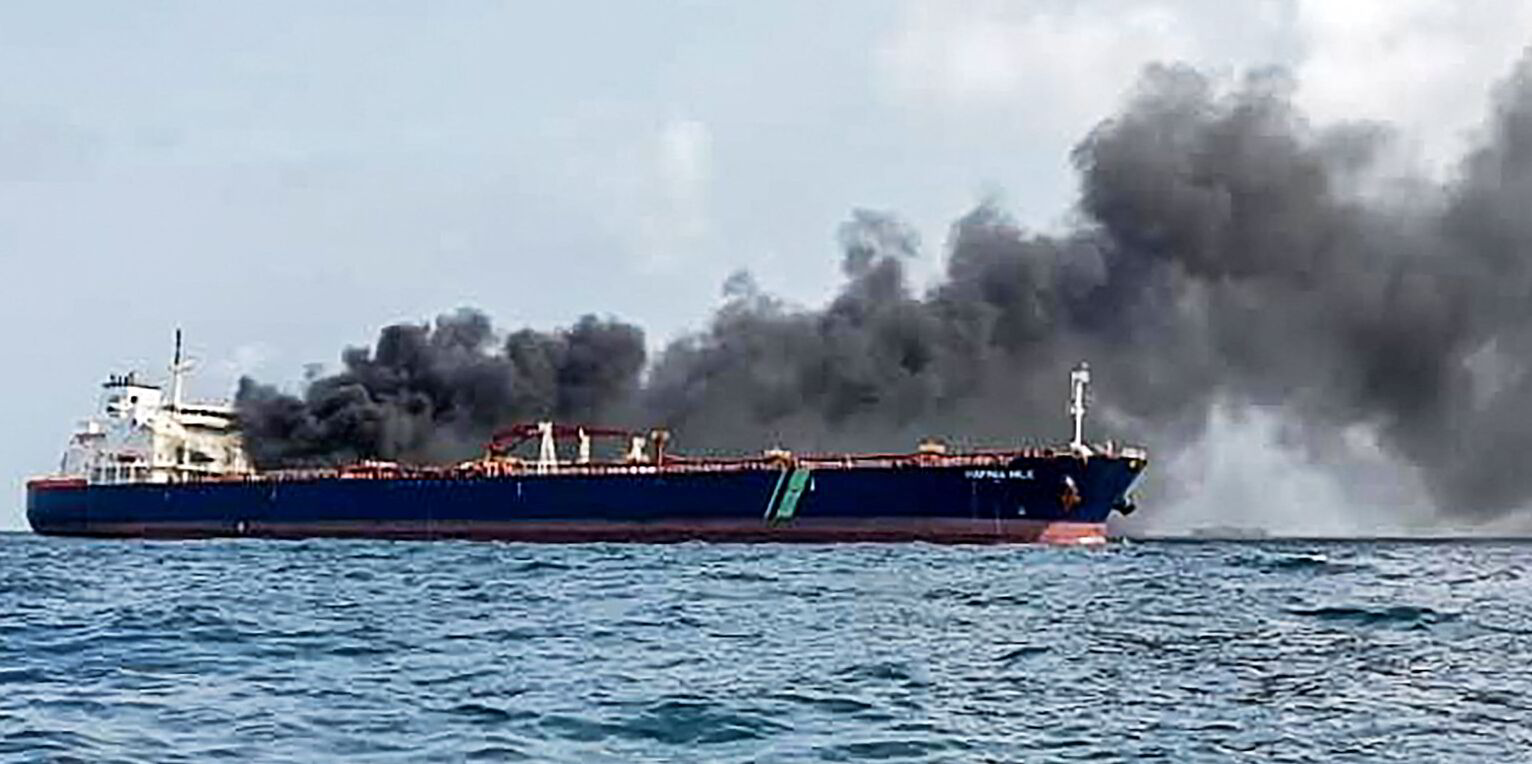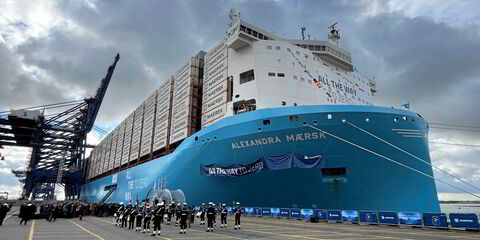Oil has been spotted in the water from a possible bunker leak following a collision between two tankers in the South China Sea , says Gard.
The Norwegian protection and indemnity club confirmed that it was covering the 74,200-dwt Hafnia Nile (built 2017) that caught on fire along with the Sao Tome & Principe-flagged 300,000-dwt Ceres I (built 2001).
It said that cover for the Ceres I remained unknown and was not provided by any of the 12-strong International Group of P&I Clubs, which represents about 87% of oceangoing tonnage.
A Gard spokesperson confirmed that all 22 crew members from the Hafnia Nile had been taken off the tanker, but the situation with the Ceres I remained unclear. “We are unsure of how it is going on the other ship,” the spokesperson said.
Hafnia said two crew members had minor injuries and the others were in good condition.
Fourteen crew members have been taken from the Ceres I, while the remaining seafarers are involved in fire-fighting operations, said the Maritime and Port Authority of Singapore.
The Ceres I was listed as being on a ballast leg at the time of the collision. Its last previous laden voyage in April involved carrying Iranian crude, according to Kpler ship and cargo tracking data.
A photo supplied by the Singaporean Navy appears to confirm the ballast state of the ship.
United Against Nuclear Iran, a campaign group, identified the ship as a carrier of Iranian crude in April 2021. It has also previously been involved in at least three voyages hauling Venezuelan oil since 2021, according to Kpler.
Kpler reported that the Hafnia Nile had a cargo of naptha.
Under international agreements, P&I liability remains with the vessel that spilt the oil, regardless of fault.
It is not immediately clear if any cargo has leaked. “That’s an ongoing process,” said the Gard spokesperson. “I believe they have seen some leakage that may have come from bunkers.”
The Ceres I had one port state control inspection under its current owner in December 2019 in China, when five deficiencies were identified, including for fire safety, but they were not serious enough to warrant the vessel being detained.

Insurer Allianz reported in May that shadow fleet tankers hauling sanctioned oil cargoes had been in at least 50 incidents including collisions and oil spills.
It said the size of the shadow fleet hauling sanctioned oil was estimated at between 600 and 1,400 ships.
The latest collision was in a similar location to the explosion and fire on board the 96,800-dwt Pablo (built 1997), which was also not carrying an oil cargo.
The Pablo had been repeatedly de-flagged following claims of involvement in trading sanctioned Iranian crude in the months before the blast in May. Its insurance was also unclear.
Gaute Sivertsen, director of the International Oil Pollution Compensation Funds, told TradeWinds in May that concerns about a growing number of tankers hauling sanctioned oil without adequate insurance had in effect turned his organisation into the “underwriter for the dark fleet”.
The 121-nation body picks up the tab for clean-up operations after a shipowner and its insurers have fulfilled their liabilities.
Read more
- Iran releases Chevron-chartered tanker after 15-month ordeal
- ‘Significant threat’: Pollution kit appeal for bulker sunk by two Houthi missiles
- Master goes missing ahead of Iranian VLCC crude transfer trial
- MR tanker order surge not enough to prevent fleet ‘ageing fast’, Gibson says
- US blacklists 11 ships in move against Iran nuclear programme




